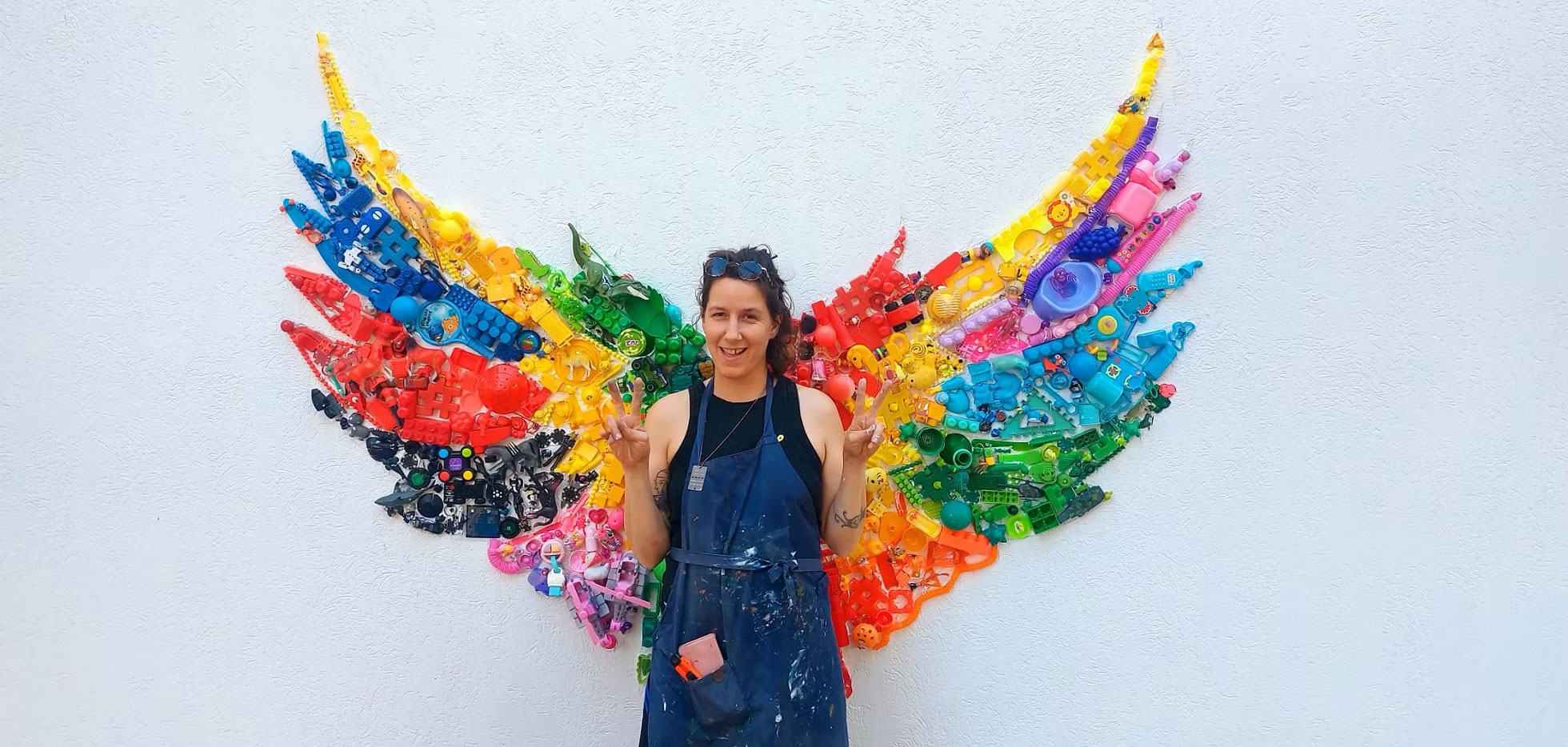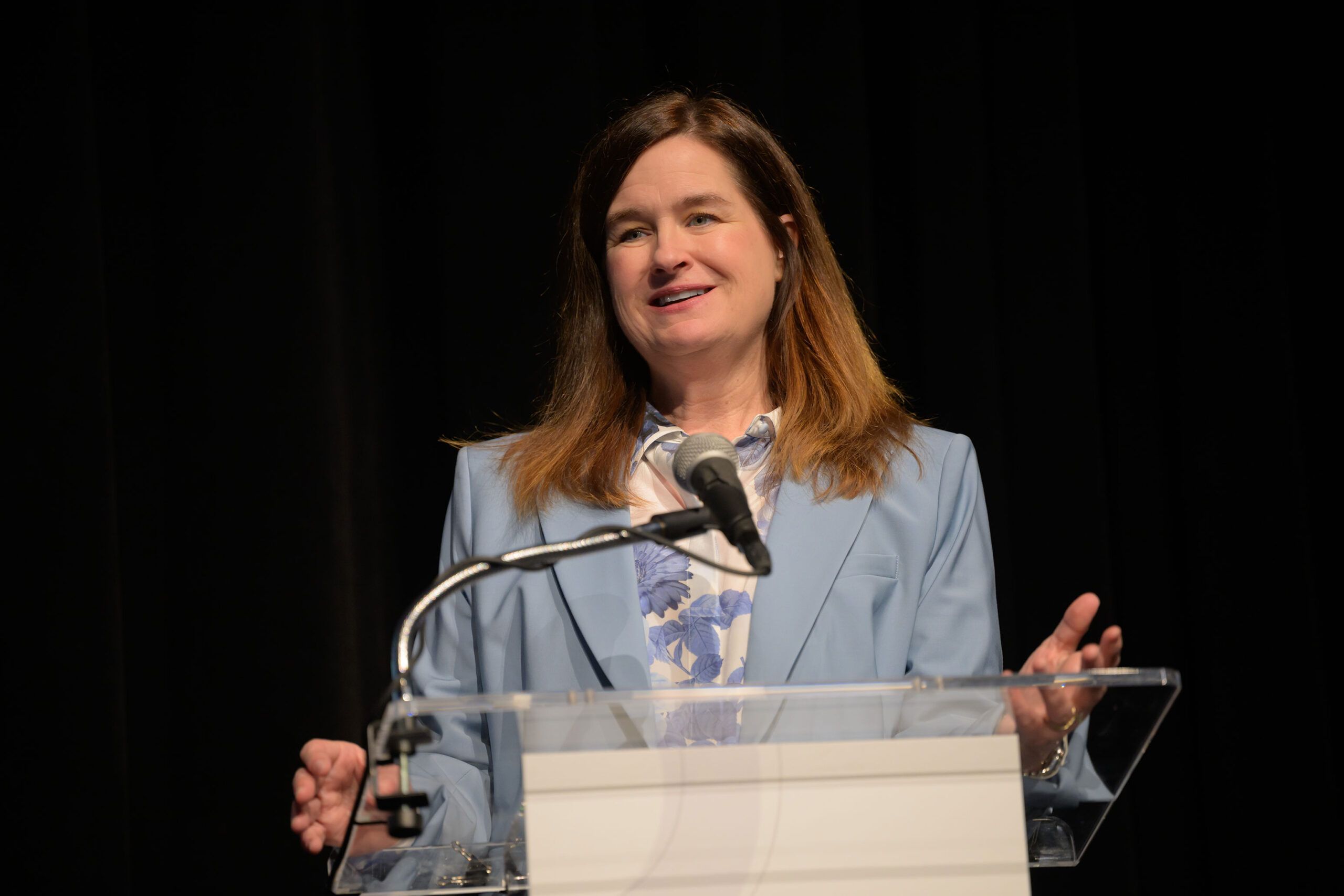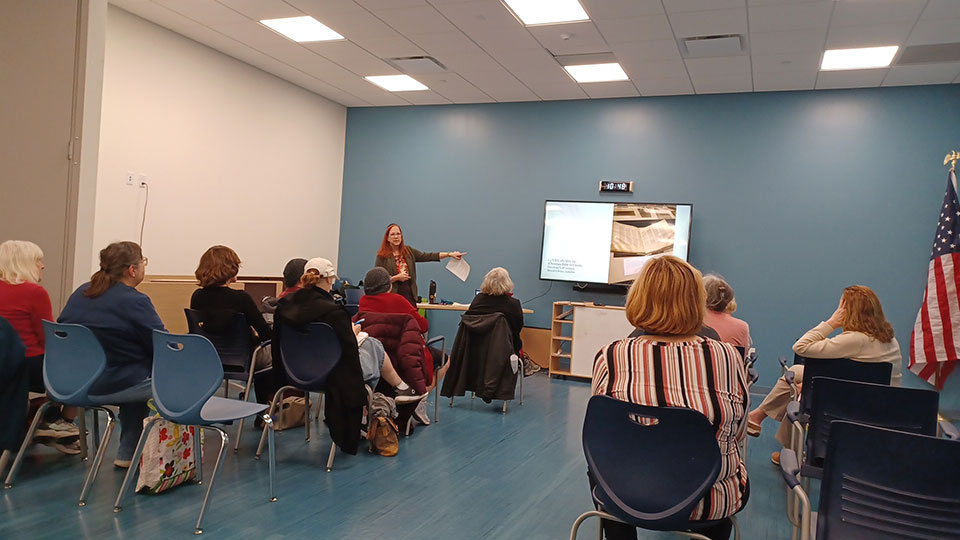Submitted by Temple Sholom.

Photo credit: Donna Barasch

Photo credit: Donna Barasch
During World War II, the Nazis began to close and destroy synagogues in the Jewish communities of Moravia and Bohemia. In 1942, the Nazi officials in charge of the Czech “Protectorate” established the Central Jewish Museum, located in Prague. Dr. Karel Stein of the Jὓdische Kiltusgemeinde in Prague reached out to the over three-hundred-fifty synagogues in Bohemia and Moravia, instructing them to send their Sefrei Torot and other ritual objects as well as books, pictures and embroidered vestments. The museum curators, who were later taken to Terezin and Auschwitz, meticulously catalogued the vast collection of objects that would later become part of the collection of the Jewish Museum of Prague.
Over eighteen-hundred Torah scrolls were sent to Prague with the hope that they would eventually be returned to their communities. After World War II, the Torah scrolls were taken to the abandoned Michie Synagogue, in a suburb of Prague. They lay in disuse in the eighteenth-century stone building, a damp warehouse. In February 1964, one thousand, five hundred and sixty-four scrolls were packed and sent to London and donated to the Westminster Synagogue to be their caretaker. This formed the Memorial Scrolls Trust (MST). Through their efforts, the scrolls were unpacked, inspected and classified into five grades, from the best to the unusable. The best scrolls could be read while those deemed unusable would serve as sacred memorials. During 1965, several scribes repaired the scrolls and, to the extent possible, identified their origins. A Memorial Scrolls Committee was established to distribute the scrolls “on permanent loan” to congregations throughout the world.
The year 2022 marked the eightieth anniversary of the efforts by the Czech Jews to preserve these sacred texts. On Sunday April 23rd, eighteen scrolls from congregations in Ohio, Michigan and Pennsylvania were brought to Temple Tifereth Israel in Cleveland, where a special memorial service was held to commemorate the anniversaries of these scrolls. Each congregation had a member carry their scroll in a procession into the synagogue, accompanied by a member holding a candle serving as a Ner Tamid. One by one, the congregations were called to the bima where a line of Torah was read from the week’s Parsha. These special readings were to be the voices of those who perished and are no longer able to read from these scrolls. Temple Sholom in Cincinnati was privileged to obtain one of these scrolls through the effort of Werner Coppel z”l. On April 20,1943, Werner was in a cattle car train transport to Auschwitz. He spent twenty-one months in Auschwitz Buna- Monowitz and escaped from the death march back toward Germany in January, 1945. He was one of seven-hundred-and-seventy-one people to escape that death march.
After the war, he met his wife Trudy and they made their way to the United States. On April 20, 1990, Werner and Trudy presented the Torah scroll to Temple Sholom. The tallit that was saved after the war was used as the chuppah over the Torah. The scroll is #652 and came from the small town of Roudnice nad Labem, Czechoslovakia. Werner’s son Steve Coppel brought the Torah to Cleveland and, wearing the same tallit that his father had dug up along with other religious relics from a synagogue, carried the Torah through the procession into and around the synagogue. A delegation of members from Temple Sholom were on the bima when their portion was read. This included Steve and Ruth Coppel, Richard and Donna Barasch, Tom Glassman and Jerry and Judy Kirzner.
Following the service, remarks were made by Lois Roman, a trustee of the MST, Dr. Mark Cole on the history of Nazism and the Holocaust, and Erika Taubner Gold, a Holocaust survivor born in 1932 in Budapest Hungary who came to the United States in 1950.




